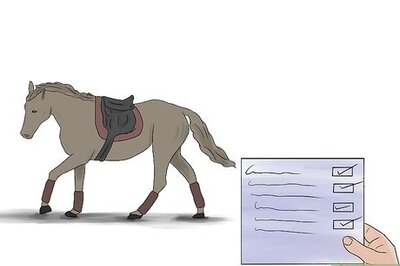
views
Dehradun: As officials struggle to retrieve the bodies of eight mountaineers in Uttarakhand’s Nanda Devi East peak, experts say it is high time authorities bring in major changes in policies related to mountaineering which is fast picking up in the country.
Indian Air Force (IAF) choppers have so far failed to retrieve the bodies of the foreign climbers, who were ascending the Nanda Devi peak from Pithoragarh district.
“Initial information suggests the mountaineering group didn’t have modern equipment like personal locator beacon (PLB) which is a must-carry tool," said Amit Bisht, principal of the Uttarkashi-based Nehru Institute of Mountaineering (NIM). PLB is a locator device that provides GPS signal to an international satellite rescue system and helps to exactly locate the coordinates of missing mountaineers, Bisht added.
“Without such locator devices, searching someone in the vast Himalayan region is like searching for a needle in the sand. Expedition teams must carry PLB-like devices,” an NIM official told News18.
Colonel (Retd) Ajay Kothiyal, who had done a couple of mountaineering expeditions, including Mount Everest, said that satellite phones are must for expeditions.
“Time matters in rescue operations and here comes the role of satellite phones. In India, only defence forces can carry satellite phones, but this is not the case in neighbouring Nepal where every expedition team carries satellite phones,” said Col (Retd) Kothiyal.
“There is an immediate need to make policy changes if we want to see mountaineering flourish in India which has emerged as a niche sport,” he added.
The retired Army officer, who was once trapped in an avalanche while climbing Kamet (25,450 feet), feels rescue helicopters should be equipped with underslung rope nets.
However, he underlined that the need for permission from authorities to use underslung ropes was again a problem. He also suggested that India should apply the procedures followed by Nepal.
Of these eight mountaineers, four were from the United Kingdom, two from the United States and one each from Australia and India.
On June 3, a rescue team spotted five dead bodies on the glaciers. The bodies of the remaining three climbers are yet to be located.
The expedition group began the ascent for the peak located at 24,389 feet from the sea level on May 13 and were expected to return to base camp by May 25. The group comprised Martin Moran, an experienced mountaineer from the UK. A senior ITBP official said the rescue team will make another attempt on foot from the base camp in the next 3-4 days to locate other members.
In 2017, eight climbers had died while scaling the Nanda Devi peak, one of the toughest climbs. In 2016, two Polish climbers had died while climbing Mt Shivling (21,467 feet) in Uttarkashi district.


















Comments
0 comment